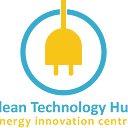Building Adaptability and Resilience in the Organization.
- Faith Amadi *Ifeoma Malo
Ever heard of the story “the Choluteca bridge located in Honduras, Central America”? This tale is a terrific metaphor of what can happen to our careers, business, and lives as the world gets transformed.
Unfortunately, the Covid-19 pandemic forced a lot of businesses, especially MSMEs to either shut-down temporarily or in some cases, permanently. However, if the Covid-19 pandemic has taught us anything, it is that for businesses to thrive even in the midst of a pandemic, it is important to build operational practices that encourage resilience and adaptability for business continuity.
The role of Human Resources (HR) is key to supporting companies, and catalyzing change in the workplace. Organizations must therefore rethink, reimagine, and reconsider how they can foster talent, deliver services, and strengthen their organization and their operations in order to deliver compelling work experience, whilst meeting the client’s needs.
One important outcome of the COVID-19 pandemic is just the way telecommuting has changed the way and manner of work. In recent times, there has been a huge amount of attention and focus on — utilizing virtual meeting tools, from Zoom to Gotomeeting, GoogleHangout to Signal, from WhatsApp to Slack, to Telegram, etc — for communicating, organizing, and document and file sharing. This means that organizations both large and small are generally leveraging IT to run successful businesses.
However, some question remains around the inclusivity, adaptability, and deployment of these technology tools and whether there are employees being left behind. What about employees that are not able to work remotely, do we just forget about them?
The pandemic has forced employees to be divided into three (3) categories — those who can actually work remotely, those who no longer have any work at all, and the ones who are actually still going into the workplace but are having to provide some support for clients and their communities of practice remotely. These categories of employees further beg the question, — how do you manage the different variables in employees management that this has thrown up? Are there modalities for further engaging with these employees?
Now, going back to the story of the Choluteca Bridge, a suspension bridge built in 1930 and remodeled in 1998 to aid communication and commerce in Honduras. However, in 1998, Hurricane Mitch — one of the deadliest hurricanes ever recorded — hit this Central American nation, causing immeasurable destruction to lives and properties. This engineering masterpiece, the Choluteca, withstood the powerful storm but something had changed. Mitch had completely changed the direction of the river underneath the bridge, making it flow in an entirely different direction. The bridge was no longer a bridge, as it led to nowhere. What lessons can we learn from this story? What parallels can be drawn in relation to the business world of today?
While the engineers focused on building a strong bridge, they forgot to invest and strengthen the support systems and facilities needed for the bridge. When the hurricane came, the Choluteca withstood the storms but the same could not be said for the adjoining structures. Building resilience also means leaders and managers of organizations must be forward-thinking to re-evaluate how the organization operates and set-up other structures that will advance the overall advancement of the enterprise.
It is important that organizations are not only ‘built to last’ but also ‘built to adapt’. Like Hurricane Mitch, the pandemic has dealt the world with a fatal blow. Resilience and adaptability are the cardinal features that can help organizations not to end up like the Choluteca. The Human Resource Manager should adopt strategies that care for and fosters the physical and mental wellbeing of employees to help them adapt to new changes in such trying times. People-centric investments in organizations will stimulate optimal performance and the right-thinking occurs amongst employees. In a similar fashion, management and human resource must invest in capacity building and support for staff to learn, understand, pivot, and embrace the ‘new normal’ — organizations can only be resilient when the employees are resilient and adaptable.
*Faith Amadi is the Assistant Manager — Human Resources at Clean Technology Hub
*Ifeoma Malo is the Cofounder/CEO of Clean Technology Hub
